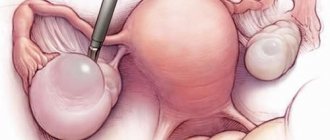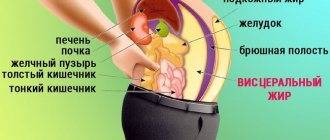Vestibulo-atactic syndrome - appears along with pseudobulbar syndrome, cephalgic, pyramidal, amyostatic. Characterized by cerebral ischemia.
It appears for various reasons, but mainly to cause vascular disorders, manifested by spasm of the arteries and brain damage.
Vestibulo-atactic syndrome is a common pathology. It begins with minor manifestations, gradually leading to serious problems with motor functions.
Risk factors
Risk factors include:
- Birth trauma in newborns.
- Various skull injuries.
- Complex infectious diseases.
- Acute or chronic drug intoxication.
- Increased background radiation.
- Lack of vitamins and microelements in the body.
- Bad habits.
- Heredity.
As you can see, vestibulo atactic syndrome accompanies many diseases, so it should not be underestimated. The symptoms of this pathology are a consequence of more serious diseases associated with brain dysfunction, which in advanced forms lead to disability and even death.
Changes in the motor functions of the body are associated with age-related disorders of the functioning of the musculoskeletal and vestibular apparatus
Prevention
Medical recommendations to prevent the development of the syndrome:
- Balanced and rational nutrition,
- Maintaining a daily routine
- Performing physical exercises that train coordination and the vestibular system,
- Rejection of bad habits,
- Maintaining a healthy lifestyle,
- Adequate sleep and rest,
- Prevention of stress,
- Strengthening immunity,
- Fighting obesity
- Limited sun exposure
- Psycho-emotional calm,
- Compliance with medical prescriptions in the presence of concomitant diseases.
Reasons for development
How does vestibulo-atactic syndrome manifest? Chronic circulatory failure of acquired or congenital form occurs in the vertebrobasilar arterial layers.
In addition, the phenomenon of vestibular-atactic syndrome is associated with changes in frontal stem cells, normal pressure hydrocephalus, cortical atrophy, hypertension, atherosclerosis, and osteochondrosis.
The immediate causes of motor and coordination problems are:
- chronic circulatory failure (ischemia);
- cerebellar dysfunction;
- frontal pathology;
It cannot be considered as an independent disease. The disorder is always a consequence of more serious pathologies - most often ischemia (chronic anemia) of the brain.
In some cases, dizziness and impaired motor function are signs of natural age-related disorders associated with the functioning of the musculoskeletal and vestibular system.
Patient's office
Request a call
Symptoms and treatment of vertebral artery syndrome
From this article you will learn: what is vertebral artery syndrome. What diseases lead to the occurrence of pathology. Manifestations of this syndrome and examination methods to establish a diagnosis. Methods for correcting any violations that have arisen.
Vertebral artery syndrome (abbreviated as VAS) is a combination of symptoms from the brain, vascular and autonomic systems that arise against the background of damage to the nerve plexus of the artery itself, deformation of its wall or narrowing of the lumen.
In the medical community, such pathology is usually associated with diseases of the cervical spine, but predisposing factors in some patients are the anatomical features of the artery itself or concomitant vascular diseases, leading to changes in the elasticity of their walls and (or) narrowing of the lumen.
Regardless of the cause, the clinical manifestations of the syndrome are associated with two mechanisms that often combine to worsen the course of the disease:
1. Squeezing, or compression, of the artery leads to disruption of blood flow to part of the brain. 2. Irritation, or irritation, of the nerve fibers that surround the vessel leads to the activation of substances that cause narrowing of the arterial wall. This further disrupts the flow of blood to the structures of the central nervous system.
Negative manifestations of SPA include:
1. increased risk of developing an acute disruption of the blood supply to the brain of a temporary or permanent nature (transient ischemic attack, stroke); 2. decreased ability to work due to the need for a number of restrictions on movement and environmental conditions; 3. significant psychological discomfort against the background of clinical manifestations, especially in young patients.
Carrying out the necessary treatment significantly reduces the manifestations of the syndrome, but does not eliminate it completely.
Even after surgical correction methods, there are often residual effects of the disease, and the need for a restrictive regime of work and rest remains. Therapy significantly reduces the risk of acute vascular manifestations in the brain and the risk of fatal disruption of blood flow. Neurologists and neurosurgeons deal with the problem of diagnosis, choice of tactics for management and treatment of patients with SPA.
Factors that increase the risk of developing
| Group | Immediate factors |
| Features of artery anatomy | Deformation Tortuosity Kink Disturbance of the wall structure Incorrect movement |
| Diseases leading to a decrease in the lumen of the vessel | Atherosclerosis Hypertension Arteritis (inflammation of the wall) Thrombosis and embolism |
Vertebral artery syndrome occurs with the following diseases that cause compression of the vessel:
Osteochondrosis
– pathological destructive changes in the disc between two vertebrae, which begin in the central part (core), progressively spreading to the entire motor part of the vertebra.
Spondylosis deformans
– changes are associated with the aging process of the body, when, against the background of decreased blood flow in the capillaries, the nutrition of the intervertebral discs is disrupted, they lose their elasticity and decrease in size. This leads to the formation of bone spurs (osteophytes) on the front and side of the vertebra.
Spondyloarthrosis deformans
is
a pathology of intervertebral joints that occurs due to occupational hazards or peculiarities of the formation of the musculoskeletal system.
Deforming osteoarthritis of the spine
– one of the elements of systemic destructive damage to the joints of osteoarthritis. Affects two or more motor segments of the vertebrae.
Ligamentosis ossificans (Forestier disease)
– systemic damage to the ligamentous apparatus of the human skeleton, characterized by the deposition of calcium in the ligaments, which progressively reduces their extensibility and mobility.
Kimmerly Anomaly
– pathological structure of the first cervical vertebra.
Basilar impression
– violation of the location of the occipital bone, it is pressed into the cavity of the skull, compressing the spine.
Cervical spine injuries
associated with sudden hyperextension. Compression of the artery by the neck muscles in certain head positions.
Destructive changes in cervical localization of osteochondrosis lead to the development of RAS in 42.5–50% of patients.
Classification
Vertebral artery syndrome is classified according to the main causative mechanism, but in most cases the disease is of a mixed nature.
| Mechanism of occurrence | Its features |
| Compression | Compression of the lumen of the vessel from the outside |
| Irritative | Irritation of the nerve fibers of the perivascular plexus |
| Angiospastic | Reflex narrowing of the artery lumen in response to mechanical activation of receptors in the wall |
| Mixed | Any combination of the above options |
Manifestations of the syndrome
Patients with SPA experience constant difficulties in performing any tasks. Every wrong movement can cause clinical manifestations, forcing the patient to limit himself in work and everyday activities. The symptoms themselves are quite painful and disturb the psychological peace of the sick, forcing them to consult doctors to correct it.
In the clinical course of the syndrome, two phases of development are distinguished:
| Phase | Her characteristics |
| 1. Functional or dystonic | Symptoms are not persistent Good response to treatment Low risk of stroke |
| 2. Organic, or ischemic | The appearance of a focus of persistent disturbance of blood flow High risk of developing acute posterior cerebral stroke The effect of treatment is reduced, residual effects on the brain are possible |
In vertebral artery syndrome, symptoms are highly variable and affect many functions:
| Clinical variant of the symptom | Its manifestations |
| Posterior cervical sympathetic syndrome (Barré-Lieu) | Pain in the neck and back of the head with reflection (irradiation) to the forehead Constant, pulsating pain Intensifies in the morning after sleep, with movement and shaking, sudden turns of the head Noise in the ears Decreased hearing Flashes before the eyes |
| Basilar migraine | The attack begins with changes in vision (sparks, loss of part of the image) Severe dizziness and gait disturbance Incoherent speech Tinnitus Pain in the back of the head |
| Vestibulo-atactic syndrome | Impaired gait and balance Nausea and vomiting Dizziness Darkness in the eyes Rapid pulse Increased blood pressure |
| Cochleovestibular syndrome | Hearing loss Tinnitus that changes when you turn your head Unsteadiness when walking Swaying |
| Visual or ophthalmic syndrome | Flashes, flickering before the eyes Deterioration of vision Tearing Rapid eye fatigue Redness of the eyes Feeling like “sand has been poured into the eyes” Periodically loss of part of the visible image |
| Autonomic dysfunction syndrome | Feeling hot or cold Increased sweating Cold feet and hands Difficulty swallowing Voice problems Insomnia or drowsiness |
| Vertebral syncope (Unterharnscheidt) syndrome | A short attack of loss of consciousness during certain movements of the neck or prolonged stay in an uncomfortable position |
| Transient ischemic attack | Impaired active movement of the limbs Changes in skin sensitivity Loss of vision Loss of balance when walking Dizziness with nausea and vomiting Double vision Inability to speak and swallow |
| Drop attack attacks | Sudden paralysis of the whole body with a fall after throwing back the head. The duration of the attack is from several seconds to a minute |
| Mental changes | Unpleasant sensations of foreign material in the upper half of the body Refusal to eat Decreased all types of activity Thoughts about a fatal disease and the inability to recover from it |
The disease can manifest itself in only one of the listed options or a combination of them.
Diagnostics
Vertebral artery syndrome is a multifaceted disease that often imitates various pathologies of the organs of vision, hearing, neck, and brain.
Therefore, the main method of establishing the correct diagnosis is a thorough interview of the patient to identify the prevailing syndrome of the disease. To clarify the cause of the pathology, a number of additional procedures are required:
| Study | Target |
| X-ray of the cervical spine and skull bones with functional loads | Primary assessment of bone elements Identification of gross skeletal pathology |
| Ultrasound scanning of the vessels of the neck and head | Inspection of the artery itself for anatomical changes, pathology of the wall and lumen, identification of compression and kinks of the vessel |
| Multislice computed tomography | Assessment of all bone structures, identification of pathology associated with the destruction of elements of the spinal column |
| Magnetic tomography of the cervical spine and blood vessels of the head and neck | Assessment of “soft” skeletal elements (discs, ligaments), identification of pathology from the artery itself and its branches |
| Angiography | A clarifying method in complex diagnostic situations. Indicated for suspected blockage of an artery by a blood clot to select subsequent treatment. |
Treatment
Treatment of vertebral artery syndrome includes both medicinal effects on the vessels and surrounding tissues, and surgical methods for correcting compression by the bone structures of the vertebrae. There is no complete cure for the disease, since pathological processes in the elements of the spinal column are irreversible .
But a complex effect on all elements of the mechanism of occurrence makes it possible to slow down and (or) stop changes, as well as reduce the clinical manifestations of the syndrome.
Medicinal methods of correction
1. Drugs to relieve swelling and inflammation
When the lumen of the bone canal decreases, the venous vessels are the first to be compressed, and against the background of impaired blood outflow from the brain, increased compression of the vertebral artery occurs. Any prolonged compression leads to a local inflammatory reaction. Therefore, spa treatment begins with these medications:
— Troxerutin; — Diosmin; — Nimesulide; — Celecoxib; - Lornoxicam.2. Medicines that normalize blood flow in the arteries Against the background of disruption of the normal blood supply to brain structures, the risk of stroke and transient attacks increases. To prevent complications use: - Pentoxifylline; — Vinpocetine; — Cinnarizine; — Nicergoline; - Instenon. 3. Drugs to protect nerve cells Under conditions of lack of blood flow, neurons are exposed to free radicals and suffer from a lack of oxygen. Medicines from this group are indicated in the phase of organic disorders in SPA in order to prevent the development of persistent impairment of brain function. — Citicoline; — Gliatilin; — Actovegin; - Cerebrolysin; — Piracetam; — Mexidol; - Mildronate; - Sumatriptan; — B vitamins; - Antispasmodics. 4. Non-medicinal treatment is aimed at relieving spasm of the muscles surrounding the spine and improving blood flow in this area - massage; - acupuncture; - PRP therapy; - physiotherapy (UHF, shock wave, HILL laser, magnet, amplipulse); — therapeutic exercises and physical education; - sanatorium treatment.
Surgical correction
To relieve pressure on the artery, a number of techniques are used to normalize the supporting function of the spinal column:
1. Percutaneous spinal fusion
– fixation of two adjacent vertebrae relative to each other
2. Fenestration of discs between vertebrae
– creation of artificial defects in them for the growth of connective tissue
3. Autodermoplasty of discs
– replacement of the intervertebral disc with one’s own tissues
4. Replacement of the disc
with a titanium-nickel explant
Forecast
Prognosis Vertebral artery syndrome cannot be completely cured. This is due to causal pathological factors - changes in the osteoarticular component of the spinal column do not undergo reverse development. Any surgical techniques provide a temporary or incomplete therapeutic effect. Drug correction is aimed at reducing the clinical manifestations of the disease, but has virtually no effect on the primary cause of the pathological process. Despite this, all treatment methods significantly alleviate the course of the disease and stop its progression.
Treatment of vertebral artery syndrome
Severity
The severity of symptoms varies from mild to moderate to severe.
Each stage of vestibuloatactic syndrome is characterized by corresponding motor and coordination problems.
A mild form of vestibuloatactic syndrome is characterized by a weak degree of ataxia (motor dysfunction. It is manifested by a change in gait, deterioration in coordination of movements.
The moderate stage is characterized by headaches and vestibular dysfunction (nausea, instability when walking).
In the severe stage, critical problems arise related to movement, standing, and even the impossibility of moving independently.
An invariable companion of ischemia is headache. The most unpleasant and unpredictable neuropathic pain.
Symptoms
What are the signs, symptoms, and complaints of patients that will allow diagnosing ataxia?
Ischemic disorders are dangerous because in the early stages they are simply not noticed, since the first symptoms that appear correspond to various health problems and conditions. A person simply does not pay attention to individual cases of illness.
This makes it difficult to timely diagnose and treat diseases that are associated with vestibulo-atactic syndrome.
The first signs of the initial stage of the disease are:
- Frequent dizziness, especially when walking.
- Flickering and “flies” before the eyes.
- Nausea, vomiting.
- Headache.
- In later stages, movement disorders appear:
- Loss of balance.
- Throwing from side to side.
- Involuntary twitching of eyelids
In addition, many people complain about:
- Deterioration in the quantity and quality of sleep.
- Chronic fatigue, loss of strength.
- Noise, ringing in the ears.
Unpleasant sensations when maintaining the same body position for a long time.
Additional manifestations are sleep disturbances, tinnitus, decreased performance, and rapid fatigue.
Cephalgic syndrome
Cephalgic vestibuloatactic syndrome, in other words headache, is a health disorder that not only brings discomfort to our lives, but can also serve as a warning signal of more serious disorders of the body's functioning, such as diseases of the brain and central nervous system.
The growing prevalence of this condition, both among the adult population and among children and adolescents, is causing concern among doctors.
Cephalgia is perhaps the most common symptom and sign of many pathological conditions of the brain. Its appearance is associated with oncological, inflammatory, infectious diseases, metabolic disorders, vascular, and neuralgic problems. Even the presence of bad habits and violation of the daily routine can provoke acute cephalgic syndrome .
The many causes of the disorder make it difficult to diagnose cephalgia as a symptom of a specific disease. Elimination of headaches should be one of the stages of treatment of the disease caused by it, and not a separate process.
Cephalgic syndrome appears as a result of ordinary nervous tension, fatigue, or as one of the main symptoms of vestibulo-atactic syndrome associated with serious brain diseases. Therefore, it is necessary to take responsibly any of its manifestations in order to protect yourself from the development of severe forms of the disease with irreversible neuro-psychological processes.
Discirculatory encephalopathy with vestibulo-atactic syndrome
Vestibulo-atactic syndrome may be a harbinger of such a serious disease as dyscirculatory encephalopathy.
The brain is the main organ of the central nervous system, which is responsible for the vital functions of the body and controls its functioning. Consists of nerve cells that perform different functions, responsible for certain actions, such as speech, thinking, movement, memory.
For normal functioning of the brain, oxygen is needed, which helps break down glucose and produce the energy necessary for work. With insufficient oxygen consumption supplied by the blood stream, the toxic effects of certain substances on the cells, nerve cells begin to die, causing certain disorders, depending on which part is affected.
Such disorders are called encephalopathy. The most common form is dyscirculatory encephalopathy with vestibulo-atactic syndrome, which in the last three stages of the disease leads to severe impairments of memory, intelligence, and thinking in general (dementia).
Vestibulo-atactic syndrome
Vestibulo-atactic syndrome is a common pathology associated with disorders of the vascular system of the human body. The pathological process begins with minor symptoms and then leads to severe impairment of motor functions.
Types of disease
Vestibulo-atactic syndrome is a set of coordination and movement disorders that arise as a result of disturbances in general and cerebral circulation. With this pathology, the patient may suddenly lose balance. The development of vestibulo-atactic syndrome is influenced by dysfunction of individual parts of the brain or vascular insufficiency in the arterial vertebrobasilar region.
Based on severity, vestibulo-atactic syndrome is divided into mild, severe and moderate. At each stage, coordination and motor impairments manifest themselves differently.
- Mild vestibulo-atactic syndrome - it is characterized by minor motor dysfunctions, which are expressed in deterioration of coordination and changes in gait.
- Moderate degree - associated symptoms occur in the form of vestibular disorders (unsteadiness when walking, nausea) and headaches.
- Severe degree - the patient has a very difficult time moving and standing, he is not able to move independently.
Causes
The following pathology contributes to the development of movement disorders and impaired coordination:
- chronic circulatory failure - both congenital and acquired;
- lesions that arise in the frontal-stem lobes of the brain;
- dysfunction of the cerebellum;
- atrophic changes in the cerebral cortex;
- dropsy of the brain (hydrocephalus);
- hypertension;
- atherosclerosis;
- traumatic brain injury;
- brain stem tumors;
- osteochondrosis.
Symptoms of vestibulo-atactic syndrome
Vestibulo-atactic syndrome is manifested by dizziness, spots before the eyes, headache, and nausea. Such patients have impaired balance, have an unsteady gait, they may fall for no apparent reason or be “thrown” from one side to the other. Concentration is impaired. With this pathology, patients complain of tinnitus, sleep disorders, fatigue and decreased performance. The symptoms of vestibulo-atactic syndrome depend on its severity.
Treatment of vestibulo-atactic syndrome
It is recommended to take antihypertensive drugs, as well as drugs that help lower cholesterol. The patient is given advice on changing his lifestyle and prescribed a special diet. A prerequisite is to quit smoking.
To regulate the blood supply and functioning of the nervous system, as well as relieve symptoms, the use of antioxidants is indicated - Actovegin, Mildronate, Mexidol. Recommended drugs include Cavinton, Instenon and Trental.
For cerebral ischemia, which is accompanied by vestibulo-atactic syndrome, symptomatic treatment includes antidepressants, usually of the benzodiazepine type. Among them, Grandaxin has the least number of side effects.
Neurologists who care for patients with vestibulo-atactic syndrome usually include physiotherapeutic procedures in the course of rehabilitation measures.
In some cases, specialists resort to surgery to treat the disease. In this case, the operation is performed on the vertebral artery, at the intersection of the vasomotor fibers. This intervention allows you to reduce spasms in the artery and improve blood circulation
Pallidal syndrome
The symptom complex of damage to the globus pallidus and substantia nigra is called parkinsonism, akinetic-rigid syndrome, amyostatic syndrome, hypertensive-hypokinetic syndrome.
It is associated with a functional deficiency of dopamine, with a change in the influence of the pallidonigral system on the reticular formation and a violation of impulses in the cortical-subcortical-stem neural circles. The reticular formation is the stem “controller-regulator” of the flow of ascending and descending impulses. When its connections with the substantia nigra are disrupted, it does not prevent the passage of excess tonic signals to the muscle, as a result of which muscle rigidity develops, supported by a continuous flow of afferent impulses to the striopallidal system. A vicious circle arises: the affected pallidal system sends uncontrolled tonic signals that increase muscle tone and increase the flow of reverse afferentation impulses.
The main symptoms of damage to the globus pallidus are:
• change in muscle tone according to the plastic type, the “gear wheel” phenomenon
(the resistance experienced during the study of tone increases towards the end of the movement), plastic rigidity;
• pose of a wax doll, mannequin - the phenomenon of catalepsy
(when moving from a position of rest to a state of movement, patients often freeze in an uncomfortable position);
• "petitioner" pose -
characteristic appearance of patients: the torso is slightly bent, the head is tilted forward (Fig. 4.2), the arms are bent and
brought to the body, gaze directed forward, motionless;
• oligokinesia
- poverty and lack of expressiveness of movements; hands are motionless when walking, there is no normal physiological synkinesis;
• bradykinesia -
slowness of movements; patients are inactive, inert, constrained;
• parkinsonian treading on the spot -
the onset of a motor act is difficult, so at the beginning of each movement the patient makes several repeated movements, for example, swaying or walking in place;
• inertial forward movement - propulsion,
to the side -
lateropulsion,
back -
retropulsion;
the patient, brought out of balance, is not
can level it automatically;
• Bradylalia -
monotonous, slow, quiet speech;
• bradypsychia
- slowing down the pace of thinking;
• micrography
- handwriting is small and unclear;
• Akairia
- “viscosity” in communication, stickiness;
• "paradoxical kinesia"
- patients who sit in a chair all day, at the time of affective outbursts and emotional stress, can run up the stairs, jump, dance;
• Parkinsonian resting tremor:
more often localized in the fingers - the phenomenon of
“rolling pills”, “counting coins”,
head tremor - the phenomenon of
“yes-yes, no-no, no-yes”;
trembling is observed at rest and decreases with voluntary movements;
• positive postural reflexes: Westphalian foot phenomenon
(with passive dorsiflexion of the foot, tonic tension of the extensors of the foot occurs - it freezes in the dorsiflexion position) and
the phenomenon of the lower leg
(in a patient lying on his stomach with his legs bent at the knees at a right angle, with further passive flexion of the lower leg it freezes in the flexion position) ;
• sleep-wake rhythm disturbance;
• autonomic disorders (greasy face, peeling skin, hypersalivation).
Diagnosis of vestibulo-atactic syndrome
Diagnosis of vestibulo-atactic syndrome includes numerous examinations of the body, aimed not only at confirming the vestibular disorder, but also at identifying the possible cause of the syndrome itself and concomitant diseases.
Find out more Symptoms of apato-abulic syndrome, diagnosis, treatment
For an accurate and correct diagnosis, differential diagnostics is used, which, in addition to collecting an anamnesis, a neurological examination of the patient taking into account his complaints, includes laboratory and instrumental research methods.
Laboratory tests for suspected vestibular ataxia:
- Blood test for biochemistry;
- General urine analysis;
- Biopsy of cerebrospinal fluid.
A clearer picture of the disease is provided by instrumental research, consisting of:
- Magnetic resonance imaging (MRI), computed tomography (CT), detect tumors in the brain
- Electroencephalography to determine bioelectrical activity
- Echoencephalography, which allows you to determine the state of the cerebrospinal fluid system and detect objects such as hematoma, tumor, brain abscess.
- Rheoencephalography helps to assess the condition of blood vessels and blood circulation in them.
- Renography of the skull and spine.
Additional information about the severity of the disease can be obtained using rapid diagnostics:
- Romberg sample for assessing cerebellar function and static ataxia.
The patient becomes in the correct position: legs together, arms forward. He will be asked to close his eyes. If a person begins to stagger and loses balance, this indicates certain dysfunctions of the cerebellar functions.
- Test palm
It is suggested to close your eyes and alternately reach the tip of your nose with the index fingers of both hands. The presence of vestibulo-atactic syndrome is determined by trembling in the hands and inaccurate hits.
- Knee joint test
From the supine position, you are asked to lift one leg and touch the knee of the other leg, then lower the leg, passing the heel along the shin of the other leg.
Damage to the cerebellum, which is responsible for coordination and balance, causes difficulty performing this task.
The diagnosis is made by a specialist doctor or a board of doctors based on research.
Diagnostics
The disease can be identified during a neurological examination and based on specific patient complaints. To clarify the diagnosis, a specialist may additionally prescribe instrumental studies:
- Rheoencephalography – helps assess blood circulation. If necessary, it is supplemented with magnetic resonance imaging or vascular angiography.
- Echoencephalography – assesses the state of the liquor system. When mixed, a formation (hematoma, tumor or abscess) can be suspected, which can provoke vestibular ataxia.
- Electroencephalography – helps analyze the bioelectrical activity of the brain.
- Computed tomography and magnetic resonance imaging can detect demyelinating processes in the brain and the presence of neoplasms.
- X-ray of the skull and spine is performed if the possibility of a craniovertebral anomaly is suspected.
Treatment
Treatment of vestibulo-atactic syndrome is carried out on the basis of a diagnostic examination. It's not just drugs and physical therapy. To get good results in treating the disorder, patients are advised to reconsider their attitude towards the health problem, lead a healthy lifestyle, give up bad habits and follow a nutritious diet.
Since one of the main causes of vestibular disorders is high blood pressure, the first stage of therapy is to reduce blood cholesterol levels (statins - atoriz, rosuvastatin) and blood pressure (hypertensive drugs - captopril, enalapril).
Priority in the treatment of vestibulo-atactic syndrome is given to the following drugs:
Actovegin
Produced in the following forms:
- Solution for injection – ampoules of 2 ml, 5 ml and 10 ml.
- Solution for infusion – 250 mg bottle.
- Tablets – 200 mg.
Actovegin is recommended to be used orally, 1-2 tablets. Three times a day before meals, without chewing, with a small amount of water.
The initial recommended injection dose is 10-20 ml. Depends on the severity of the disease. Then, the dosage is reduced to 5 ml once a day or several times a week.
For a dropper, use 250 ml of solution for infusion at a rate of 2-3 ml per minute once a day (10-20 droppers per course).
Precautions : It is not advisable to use the drug during pregnancy and breastfeeding.
When injected, there is a risk of angioedema.
Adverse reactions : urticaria in the form of itching, redness of the skin, hyperhidrosis (excessive sweating), mild chills, fever.
Mildronate
Produced in forms:
- Solution for injection – 5 ml ampoules.
- Capsules (tablets) – 250 mg, 500 mg.
For chronic disease, 0.5-1 g (1-2 tablets of 500 mg or 2-4 tablets of 250 mg) per day for 4-6 weeks.
In the acute phase - 0.5 g intravenously once a day for 10 days.
Not recommended for use during pregnancy and nursing mothers. Used with caution in pathological conditions of the liver and kidneys. Contraindicated in children under 18 years of age, people with increased intracranial hypertension, intracranial neoplasms, and venous outflow.
Should be taken with caution in combination with other medications as it tends to enhance the effects of many of them.
Side effects : Does not cause life-threatening adverse reactions.
Sometimes allergic reactions, changes in blood pressure, agitation, increased heart rate, dyspepsia: heartburn, belching, diarrhea occur.
Mexidol
Produced in forms:
- Solution for injection – 2 ml, 5 ml
- Tablets 125 mg
Mexidol is taken orally, one or two tablets three times a day, for 2-6 weeks.
The injection drug is administered at a dose of 0.1 g, 1-3 times a day, gradually increasing the dosage. Maximum 0.8 g.
Precautions: The drug is contraindicated in the presence of an allergy to vitamin B6, in children, during pregnancy, breastfeeding, in case of serious functional impairment, organic damage to the liver, kidneys.
An overdose causes drowsiness and affects the reaction speed.
Side effects : allergic reactions of varying intensity are possible, skin reactions in the form of rash, itching, weeping skin, nausea, vomiting, and a feeling of dry mouth.
In general, the drug is well tolerated by most patients.
In addition, sometimes prescribed:
Cavinton
- Tablets – 5 mg, 10 mg.
Cavinton for this pathology is taken orally 5 mg (1 tablet of 5 mg or ½ tablet of 10 mg) 2-3 times a day, 1-8 weeks.
Contraindicated during pregnancy and breastfeeding. Not recommended for hypersensitivity to components, acute phase of cerebral hemorrhage, severe ischemic heart disease (unstable angina), cardiac rhythm conduction disturbances (arrhythmias).
Cavinton affects the reaction rate.
Adverse reactions: tachycardia, cardiac dysfunction, slight pallor of the skin, signs of allergies (itching, redness), impaired sleep quality (insomnia, night terrors), dizziness, low-intensity headache, migraine attacks, hyperhidrosis, fatigue, weakness, nausea, sometimes vomiting, heartburn, dry mouth.
Trental
Release forms:
- Solution for injection – 5 ml ampoule.
- Tablets – 100 mg.
Mode of application:
- Droppers – 100-600 mg once or twice a day.
- Intravenous injection 100 mg once or twice daily. The patient should be in a horizontal position.
Take two or four tablets orally 2-3 times a day after meals, without chewing, with water.
Precautions : it is contraindicated to use trental during pregnancy, breastfeeding, gastric and duodenal ulcers, a tendency to gastrointestinal hemorrhages, strokes of various origins, retinal hemorrhages.
Learn more What is intracranial hypertension (ICH)?
Used with caution in severe forms of cardiovascular pathological conditions, a tendency to sudden changes in blood pressure, stomach ulcers, and in the postoperative period.
Side effects : usually well tolerated by patients. Sometimes the following disorders occur: nausea, sometimes the urge to vomit, bowel disorders (constipation or diarrhea), decreased blood pressure, palpitations, headache, migraine attacks, dizziness, irritability, emotional instability, sleep disorders (insomnia, nightmares), allergic skin reactions in the form of hyperemia, skin itching, Quincke angioedema.
Complex therapy recommends the use of: vitamins, microelements, for example, from the Vitrum series.
Physiotherapeutic treatment usually complements medication and includes medicinal baths, massage, therapeutic exercises, oxygen therapy and other procedures as prescribed. Sometimes acupuncture and hypnosis are used.
Alternative Treatment
Alternative treatment for vestibulo-atactic syndrome is carried out in conjunction with medication. Let's consider several recipes that will help eliminate the main symptoms of the disease:
To dilute the blood and increase blood flow in the vessels of the brain, use garlic.
Peel large heads of garlic and chop in a meat grinder. Place in a cool, dark place for 3 days. Take a 1:1:1 mixture with honey, lemon juice. 1 tbsp. spoon before bed.
With high blood pressure
Mix corn silk (40 g) and lemon balm (20 g) with lemon juice, pour in 1 liter of boiling water. Leave for 1 hour.
Strain, take half a glass 3 times a day, half an hour after meals.
Improve blood circulation
Mix ½ kg cranberries, 150 g finely grated horseradish, 350 g honey. Take 2 teaspoons every day. After meals, drink tea or water.
Clean the vessels
1 tbsp. pour a spoonful of juniper berries with 200 g of boiled water at room temperature. Leave for 8-10 hours. Take 1 tbsp. spoon 3-4 times a day. The course is 1.5-2 months.
Herbal treatment gives good results in the treatment of vestibulo-atactic syndrome. Alternative medicine doctors offer several recipes:
For dizziness, tinnitus
Mix equal parts of thyme, motherwort, mint, and cucumber herbs. Pour 450 g of boiling water, leave for 2 hours. Strain thoroughly and take ½ glass 2 times a day after meals.
Homeopathy
In case of intolerance to synthetic drugs and various contraindications, homeopathy comes to the rescue. Homeopathic medicines have shown good effectiveness:
Golden iodine
Dosage: 5 granules twice a day under the tongue 20 minutes before meals or one hour after meals for 2 months.
Precautions : Golden iodine is contraindicated in case of individual hypersensitivity to the components of the drug, pregnancy and breastfeeding. It is not advisable to give to children.
Side effects : Sometimes allergic reactions occur: skin rash, itching sensation.
Hypertensin
Take the drug five granules in the morning and evening half an hour before meals.
In acute cases, three to five granules every 10-15 minutes.
Precautions: Contraindicated in those with hypersensitivity to the drug.
No side effects were identified.
Venartin
The usual dose is 7 granules 2-3 times a day under the tongue half an hour before meals.
The course of treatment is 1 month, repeated after 1-2 weeks.
Precautions : Should not be combined with food consumption, various teas, including herbal, nicotine, alcohol, camphor-menthol preparations and oil-based essential oils.
There are no side effects.
Tanakan is a drug based on ginkgo biloba.
Dosage:
- Take one tablet three times a day with food and water.
- One dose solution three times a day with meals, previously dissolved in 0.5 tbsp. water.
- Course duration is 1-3 months.
Precautions: Contraindicated in children under 18 years of age, used only for those with individual indications.
Not used during pregnancy, breastfeeding, with peptic ulcer disease, erosive gastritis, lactose intolerance, acute myocardial infarction, unstable angina, reduced blood coagulation.
Do not use simultaneously with Warfarin and aspirin.
Side effects : possible allergic reactions, reduced blood clotting, gastrointestinal bleeding, eczema, digestive disorders (dyspepsia), diarrhea, constipation, nausea, sometimes vomiting, headaches, migraine attacks, tinnitus, dizziness.
If the proposed methods do not bring the desired results, surgical treatment is prescribed. Surgery on the vertebral artery is performed by doctors of the highest category, since it is a complex surgical procedure. However, it is low traumatic and gives good results. The operation itself, when performed correctly, is quite safe and has a high degree of effectiveness (about 70%).








